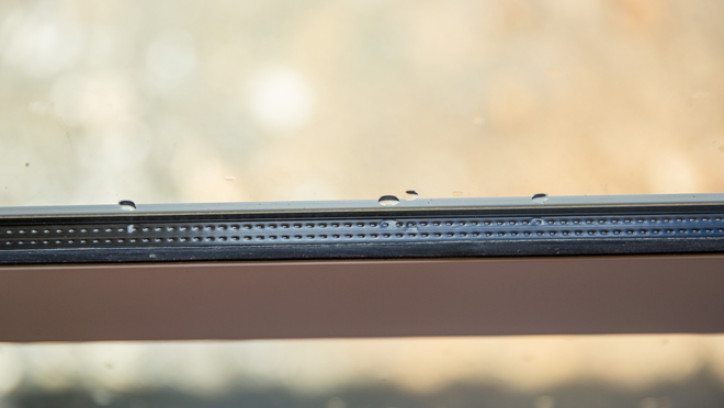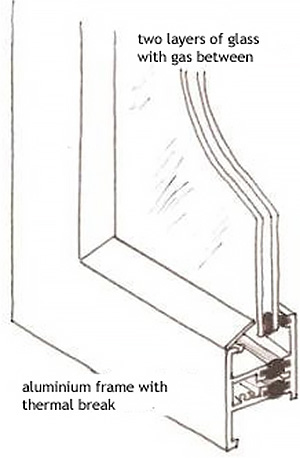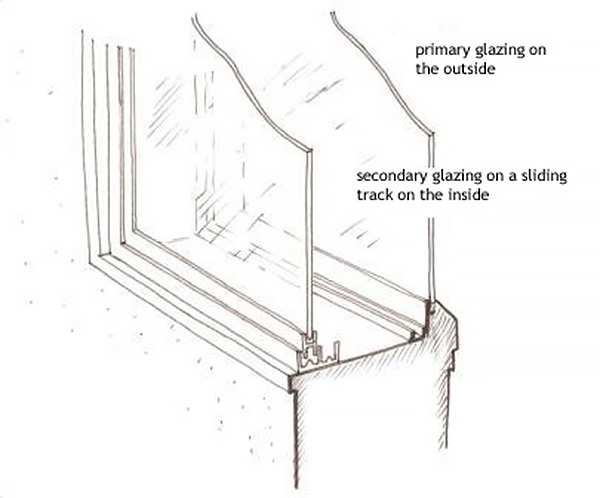Glazing and glass options
Last updated: 9 August 2023

Windows bring in light and fresh air, but watch out for noise, glare, moisture and heat escape.
Windows – much more than a view
Once you've insulated your ceiling, floors and walls, the next biggest culprits for heat loss are the windows and other glazing such as skylights and glass doors.
Today most new houses and additions will require double glazing to comply with the New Zealand Building Code.
Double glazing or secondary glazing can make a big difference to comfort levels in your home. Combined with insulation in the walls, ceiling and floor, double glazing your windows and doors will help reduce heat loss, condensation on the glass, and heating and cooling costs.
The investment will be worthwhile – a warmer, healthier, quieter home with lower power bills. There's a lot to consider – speak with your builder, designer or window supplier about the best options.
Choose the right people for your type of building work
Get information about choosing the right people, including when to use a licensed building practitioner (LBP).
Make good glazing decisions
The right glazing choices can help make your home more comfortable in both hot and cool weather whether you are building a new home or renovating.
It is worth considering retrofitting double glazing by replacing existing windows with double glazed ones, or by choosing another option such as fitting secondary glazing to existing windows.
TIP - Retrofitting double glazing
You don't need to replace all windows at once – or even every window. Prioritise your spending by concentrating first on windows in rooms that you use the most, or that are hardest to heat.
The amount and orientation of glazing for your home will depend to a large extent on the climate and microclimate of your site. Wind, temperature, sun angles and proximity to the coast will all influence decisions about the size, type and placement of glazed areas.
There is a range of glazing options available. Some keep heat inside your home, others keep heat, noise, light and glare out.
If you're building new, or replacing window/door frames and the glazing, choosing the right frames will help you get the best performance out of your windows, skylights and glazed doors.
Window and door frames has more information.
TIP - Maximise a window's performance
Condensation occurs when water vapour inside your home comes into contact with cold surfaces such as glass or non-thermally broken aluminium window frames. The most effective way to reduce condensation is to maximise the thermal performance of both your glazing and window frames, and to ensure your home is warm and well ventilated.
Window Energy Efficiency Rating System (WEERS)
The New Zealand window industry uses a Window Energy Efficiency Rating System that allows you to compare window thermal performance by a simple star rating.
WEERS uses a six-star system – the more stars the better a window's insulating properties. Ratings are for the combination of glass type and the frame. Choose windows and doors with the highest star rating you can afford.
Energy Efficiency on the Window & Glass Association New Zealand website has more details.
Glass options
There are many different types of glass available for double (and triple) glazing other than standard clear glass, including:
- low-emissivity glass (also known as low-E glass) lets light and heat in, but helps prevent heat from escaping. There are different performance grades of low-emissivity coatings, so it pays to ask suppliers for information about options and performance data.
- reflective glass, tinted glass and spectrally selective glass reduce the amount of heat and light that can get in, so are good at keeping summer heat out. The type of glass treatment determines whether infrared light (radiant heat), visible light or ultraviolet light is filtered out – ultraviolet light causes fading.
- laminated glass consists of two sheets of glass bonded with a plastic or resin layer. It absorbs ultraviolet light and some heat and is the best option for reducing noise. If it's hit, the glass is held together by the resin layer.
- toughened glass is much stronger than standard glass. It's designed to withstand direct impacts and to shatter into small chunks if broken.
Building Code clause F2.3.3 requires that glass that people are likely to come into contact with shall either break safely, resist impact or be protected by a barrier. This glass must have a stamp on it to show that it is safety glass which meets the required Standard.
Making sure you have safety glass has more information on how to check whether glass is safety glass.
Double and triple glazing
What is double glazing?
A double-glazed window uses two panes, separated by a gap which is filled with air or an insulating gas such as argon. It is also known as an insulating glass unit (IGU).
Spacers along the glass edges keep the two panes apart, creating a gap between them. Thermal spacers (also called warm edge spacers) provide better thermal performance than standard aluminium spacers.
Gaps can vary between 6 and 16mm with 12 to 16mm gaps being most common for optimal insulation performance. Argon gas is a better insulator than air, though slightly more expensive, and in combination with low-E glass and high performance frames can give an excellent thermal performance.
If you are retrofitting double glazing to your existing windows, there are three main options:
- replacing the whole window frame with new frames
- installing double glazed inserts into your existing window frames – this is a cheaper option if your window frames are still in good condition
- installing temporary or permanent secondary glazing.
Low-E and tinted glasses can be included in these retrofit options.
 Typical double glazed aluminium window
Typical double glazed aluminium windowTIP - Benefits of double glazing
In a well-insulated home, windows and other glazed areas are the biggest source of heat loss. By double glazing a window with clear glass, you can halve the window heat loss compared to a single-glazed window of the same size and shape.
You can improve this further by using thermally broken aluminium, unplasticised polyvinyl chloride (uPVC), fibreglass or wooden window frames.
What is triple glazing?
Triple glazing consists of three panes of glass separated by air gaps to provide comparatively high levels of heat retention and noise reduction. Triple glazing is an option for very noisy or very cold locations but is more expensive.
Insulated glazing units and noise reduction
Glass is usually the weakest barrier to noise in the building envelope. Standard double glazing provides a little improvement on single glazing for most sound frequencies but not always for low frequency noise. Triple glazing is better again. If noise is a problem, options include using thicker and/or laminated glass – some laminated glass comes with a thick acoustic inter-layer – and increasing the air gap in double glazing.
Opening the windows will increase noise levels, so you'll need to consider the best way to manage ventilation if exterior noise is an issue.
Alternatively, consider secondary glazing. It can be a better option for blocking external noise – consult an acoustician for low frequency noise or traffic noise issues.
Reducing noise has more details.
Secondary glazing, solar film and other options
Secondary glazing
'Secondary glazing' means inserting a second pane of glass or acrylic beside or on to an existing window frame creating an air gap between the panes. It's an alternative to retrofitting new double-glazed windows. Generally the timber reveals and other structural features of the window can be kept. Check with a professional installer to see if this is an option for you.
You can choose tinted or low-E glass for your secondary glazing, and with some systems, you can swap the extra pane for insect screens fitted to your windows in summer.
Secondary glazing is generally a cheaper option, and recent research indicates that glass or acrylic secondary glazing systems perform as well as some types of double glazing.
Secondary glazing – how does it work on the Build magazine website has more details.
However, some types can be visually intrusive and reduce space on the window sill. Freestanding systems will need to be removed every now and then for the glass/acrylic to be cleaned, dust and debris removed, and wooden sills repainted. With double glazing now common, you may get better market value in the long term from double glazing.
 Primary and secondary window glazing
Primary and secondary window glazingShrink wrap secondary glazing kits
These are a great low cost DIY option if you are renting or if you cannot afford double or secondary glazing. They can be an effective way of improving your window performance in winter – they help with condensation as well as reducing heat loss.
Clear plastic film is attached to your window frame with double-sided tape, and then shrunk to fit using a hair dryer. You can buy these from a hardware store or online. The paintwork will need to be in good condition to get enough of a seal to work. Generally they will only last one winter season though, so you will need to redo your windows each autumn.
Because adhesive tape is involved, care needs to be taken when removing the film to prevent damage to the paintwork – make sure you keep the instructions.
Solar films
An alternative to using tinted and reflective glass is to use a thin, flexible, transparent film to enhance a single glazed pane. Film can be applied to almost any glazed fixture that has a frame.
Solar films can reduce glare, reduce solar heat gain, reduce fading, and reduce the likelihood of injury from breakage.
Check the cost and effectiveness of solar films for the comfort and safety level you want. If you need to keep your home warm in winter, some low-emissivity films could help reduce heat loss provided they stay dry – their performance is largely negated if covered in condensation. Films are an option for privacy and for sun control in summer.